Description
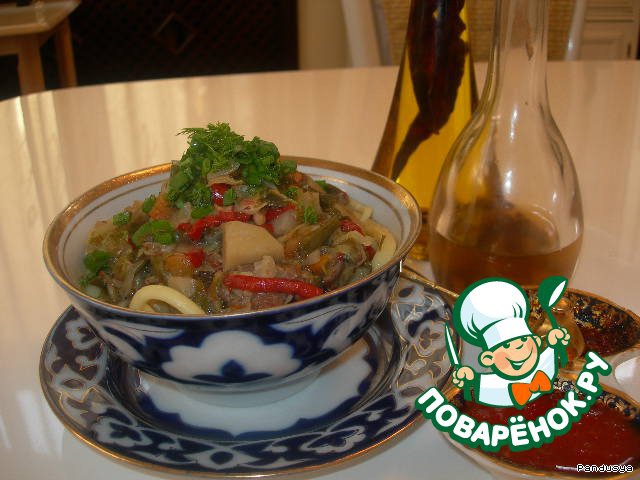
In Central Asia lives a very many nationalities. Of course, historically, their culture are intertwined, and this affects the affinity of languages, traditions and, especially in the culinary arts. Hence, it is sometimes difficult to answer the question about belonging to a particular nation of a certain culinary masterpiece. One of such masterpieces of Central Asian meal is Lagman. For those who first hear about this dish, I will explain is manually stretched noodles with gravy, but it's unlike noodles flat view, but rather a kind of spaghetti. That there are many varieties of it, no doubt, but the real dish is called, but rather clarify: the Uighur. I want to share the secrets of making Uyghur lagman, focusing rather on the technique of cooking stretched noodle, not gravy. After all, as mentioned above, the gravy – SAI - may be different, but the dough is one - extended. This skill passed to me by my mother, she is a native of Xin-Jiang Uygur Autonomous region of China.
Ingredients
-
Basturma
400 g
-
Vegetables
-
Dough dumplings
Cooking
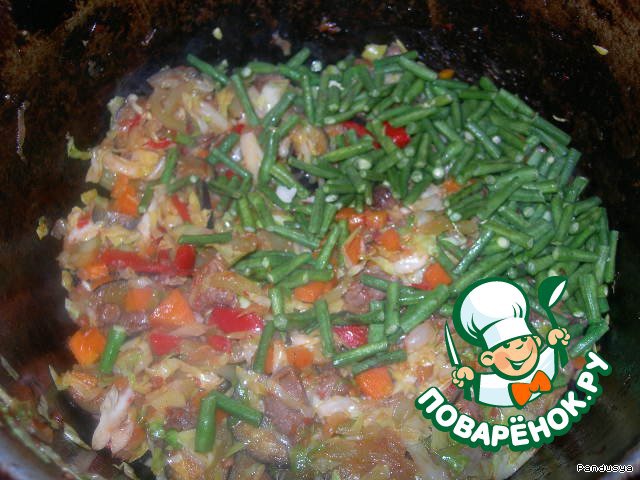
So, let's get down to business... first you need knead the dough for salt water. For example, I add the egg (the dough is delicious and beautiful in color), just add some protein. While the dough "rests", taking cooking sauce – SAI or wagu (called differently). For the gravy we need: beef or lamb meat - 400-500 g potatoes - 2-3 PC., carrots - 1 PC., Bulgarian pepper - 2 PCs., red sweet pepper - 1 piece tomatoes 2-3 PCs or roasted tomato - 2 tbsp, cabbage – 150 g radish 150 g, celery. In some cases, add radishes, eggplant, Korean cabbage, and even cucumbers. But the main ingredient is the Janda, garlic sticks, they can be replaced with green artichokes.
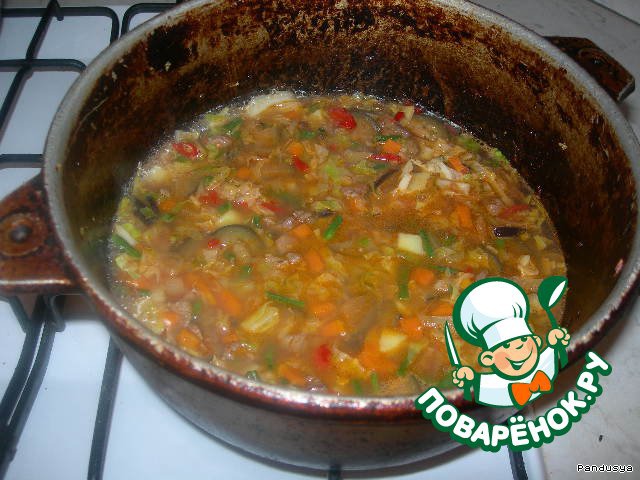
1. In hot oil fry chopped into thin slices of meat with onion, potseluem. 2. Add the tomatoes or roast tomato (you can substitute tomato paste). 3. Next, put the roast and all vegetables: first the carrot, radish, bell and red pepper, cabbage, the Janda. Add a bit of boiling water, cook until done: depending on whether you want to crunchy vegetables or not. And, as mentioned above, you can prepare thick gravy or make it thinner by adding boiling water. Potseluem. Gravy is ready.
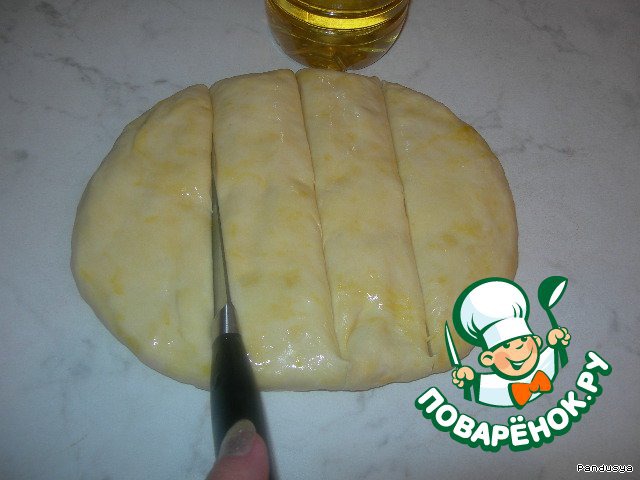
Well, now we come to the most difficult process - the stretching of the dough noodles, the length of which in the home, sometimes over 10-15 meters! The reason I say at home, because lagmannaya, cook on a meticulous work must devote as little time as possible, and pulling it out as much as possible, a larger number of portions. Therefore, chefs are usually men - they pull the noodles so long that the woman to raise her will just not do. And the cooking technique involves the beating of the noodles on the table, which gives her extra few inches (and maybe metres), smooth surface and fine workmanship. 1. Take our "rested" dough. Will form it in the form of a thick pellet (no matter what shape, though square). 2. Well lubricated with vegetable oil. 3. Divide it into multiple strips, with a width of 5-8 cm (in my case into 4 pieces). 4. Each strip will give the form of sausages (remember the rolled clay sausages?)
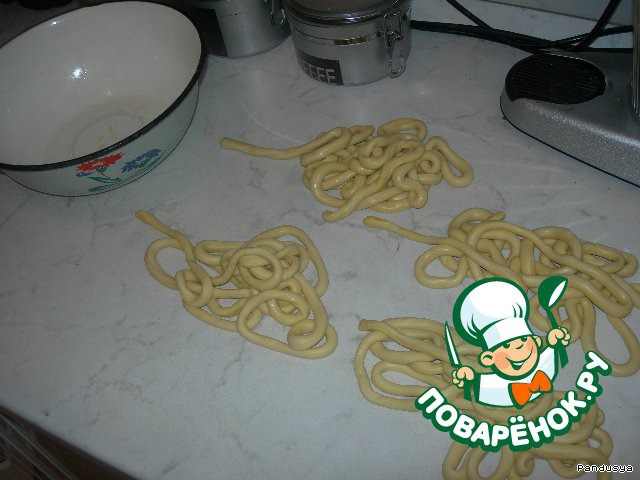
5. Each sausage with one hand while the second hand pulling her. Do not try to thin noodles - vain efforts! 6. Fold a long, fat noodle a snake in a Cup, liberally brush with oil. Cover, preferably with cellophane, so that the dough does not zavetrilos. So do each sausage. Again leave the dough to rest for 15 minutes. 7. Now take a Cup of the end of one noodle and two hands pulling her, pulls out dishes as possible at a greater distance from it. Do take turns with each of our curves, which will gradually turn into thin noodles. While you thus pull the last noodle, the previous one is a little rest and will again "pass" through the hands. By the way, the dish can be pull in 4 and 6 hands. The drawing process usually joined the household. 8. This procedure we repeat several times until the noodles will not get the desired view. In Uighur lagman in comparison with the Uzbek, the dough is very thin. Even here, depending on the dough thickness, the change in taste. 9. Ready stretched noodles collected as follows: take one end of one noodle in his right hand. The left hand take the noodles at a distance of 40-50 cm (can be less). And thus left right hand "collected noodles" until it's over. 10. Several times beats noodles hitting it on the table. 11. Drop into boiling salted water. 12. With the help of Chinese chopsticks or fork a few movements you need to spread the noodles in the water. 13. As soon as the noodles will float to the top, then a colander to remove it. The fire must be strong. And ensure that the dough is not overcooked - it should be stiff and elastic. 14. Cook the noodles one, we'll move on to another. Also collect, bounce, drop it into boiling water.
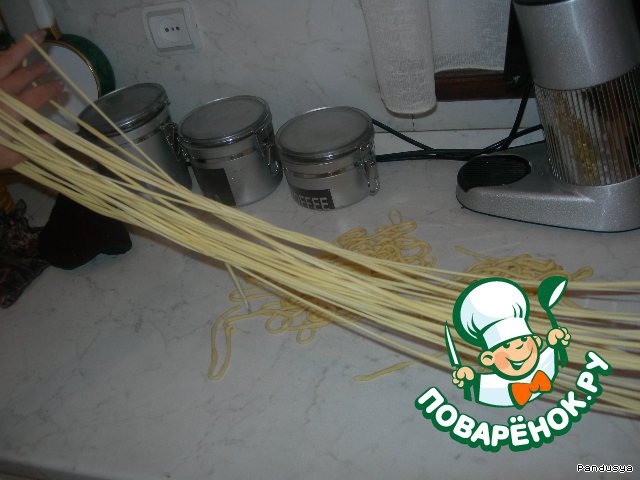
15. Welded ready lagman some washed under the tap in cold water and grease with some vegetable oil. I used both method. For myself, chose the second. Here's our dish is ready! Of course, just before serving, divide the dough into portions, then rinsed with boiling water to heat it up. On top pour the gravy, as desired decorate with greens.

Despite the presence in this dish different kinds of vegetables and spices that give enough taste and flavor, eating Laghman necessarily lasoy and vinegar. Laza - this bitter seasoning (butter sauteed minced garlic with red ground pepper). It adds everyone to his liking. Without the eyes and vinegar to the lagman of Uighurs is not the dish, but the dish is odorless and without salt. There are even lagman - big skill: you eat with the Chinese sticks. Bon appetit!!!
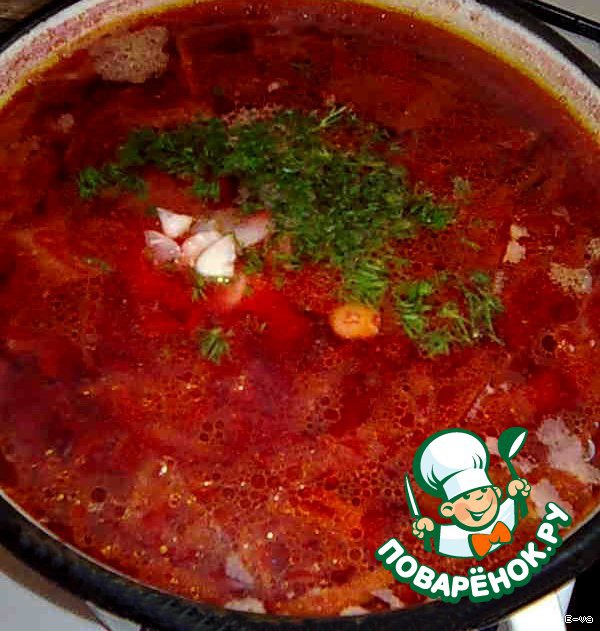
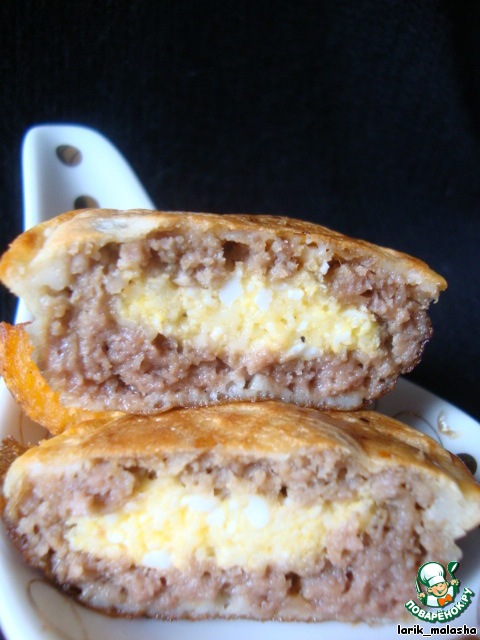

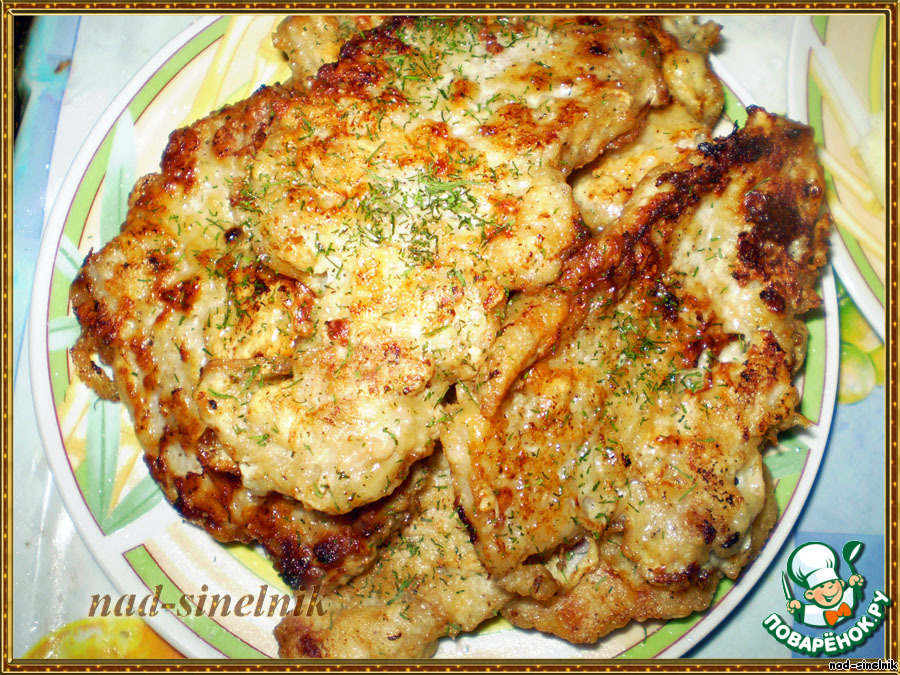
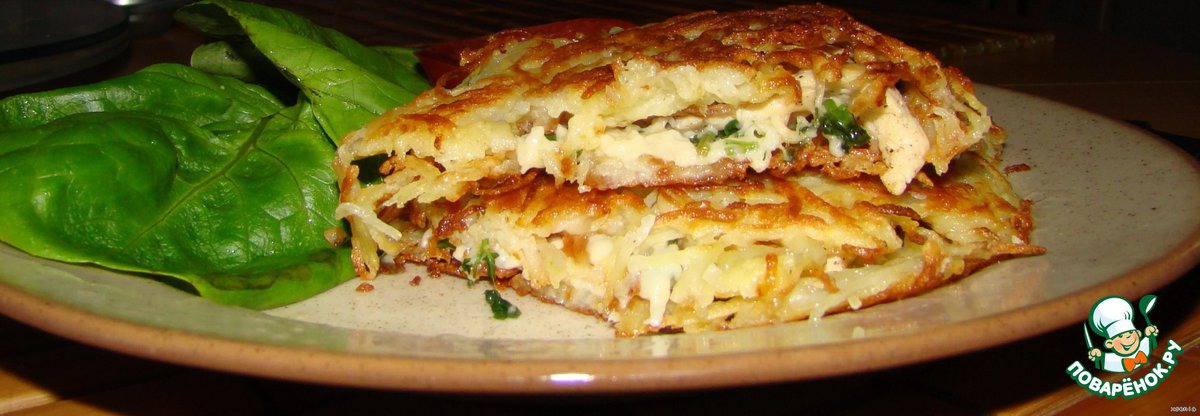
Leave a comment or a recipe review
Leave comments can only registered users.
Register, or Login if you are already registered.